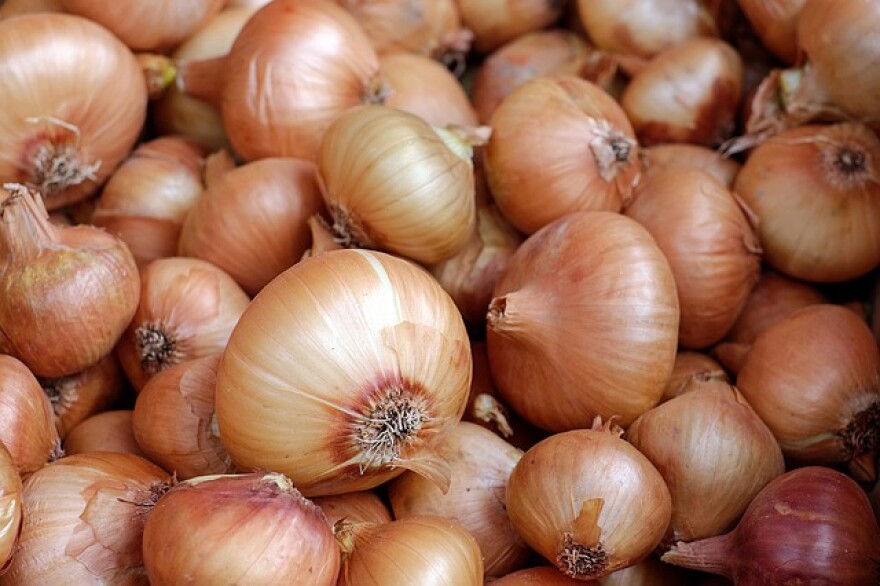They are all liars … well, most of them are, anyway. Almost all the recipes stuffed in my grease-splattered binder at home that call for cooked onions indicate that it’s somehow possible to caramelize them in five minutes or under. Pshaw. It’s not possible.
Sure, you can soften the diced onion in a bit of melted butter, maybe get a bit of translucence over five minutes … but even that’s pushing it. You want light golden brown? Try 15 minutes. And if you want fully caramelized? Rich, nut brown and mouthwateringly sweet? Try standing in front of that pan for 35 minutes, at least.
Julia Child tells it straight. In her description for french onion soup, she tells you to cook the sliced onions “slowly until tender ... about 10 minutes. [Then] blend in the salt and sugar, raise [the] heat ... and let the onions brown, stirring frequently until they are a dark walnut color, 25 to 30 minutes.” Ten minutes plus 25 to 30 … is 35 to 40 minutes. According to Julia, that’s how long it takes to caramelize onions.
So what’s with the prevarication, recipe writers? Truth is, you probably know that your estimate isn’t accurate, but being accurate would convert a 30-minute meal into a 65-minute meal. That sort of task could be pretty intimidating for a Tuesday evening, and it might be hard to sell a recipe that begins with 35 minutes of stirring at the stove.
So why not just say “soften” the onions? Somehow calling food “translucent” doesn’t hit the stomach the same way as calling it “caramelized.” That word makes you think of warmth and flavor and sweetness and… candy.
Caramelization actually does have a lot to do with sugar. Onions are naturally sweet and get even sweeter in the pan. When cooked, the heat raises the temperature in their cells until at a certain point, the complex chain molecules break down into simple sugars. This reaction … called pyrolysis (pie-rawl-asis), is what causes sautéed onions to brown and develop a sweeter flavor. When you cook those complex sugars to the teetering edge of too cooked, that sweet flavor becomes delicate, intense, focused and irresistible. Which is why people are willing to put in the time.
So, how do you make properly caramelized onions? First, plan for more than five minutes. Use a wide, thick-bottomed pan for maximum heat contact with the onion slices. Five or six large onions will yield around two cups of the finished product. Any onion will caramelize, so feel free to experiment. Yellow onions tend to caramelize easily and have a versatile flavor. Red onions are fun for their deep purple color and are great on pizzas and salads.
Coat the bottom of your pan with olive oil or a mixture of olive oil and butter (about 1 teaspoon per onion). Then add the onions to the hot oil and stir to coat. Spread the pieces out evenly. Then turn on some good music, or check email, or empty the dishwasher if you must, all the time keeping one eye on the pan and stirring it occasionally.
The trick is to leave it alone enough to let the onions brown, but not so long that they stick or burn. If you stir them too often, they turn limp and noodly but stay an unappetizing parchment color. With patience, you’ll begin to see the gold peeking through about 10 minutes in.
As soon as the onions get soft, add a pinch or two of salt. Some people add a teaspoon of sugar too, but it’s not necessary. If you are patient, all the sweetness can come naturally from the vegetables.
You should be scraping up the sticky bits from the bottom of the pan as you go – it’s all just flavor. And toward the end, you can deglaze the pan … pouring in a bit of liquid like beef broth or wine to scrape up all those yummy monosaccharides for even better flavor and color – just let the liquid cook down for a minute or two before you pull it off the heat so your onions won't be soupy.
You can store caramelized onions in the fridge for up to five days, and in the freezer for up to three months. It’s efficient, if you love the sticky things, to cook a bunch at a time, and have them handy for everything from scrambled eggs at breakfast to melted goat cheese panini the next time you want to impress your guests.


